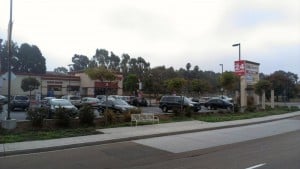Large scale greywater reuse
Apartments, businesses, schools, or other situations with more water, more people, and more public exposure to the greywater will require a more complex and sophisticated system for reuse. Systems for this situation collect greywater in a large temporary tank, filter and disinfect it, and then pump it back to either flush toilets, or supply a drip irrigation system for the landscape.
Here is a system done by ReWater from a laundromat in Chula Vista, California.
Note that there have been multiple examples of platinum LEED buildings incorporating rainwater to flush toilets, and erroneously referring to the system as a “greywater system.” Technically this is not greywater, rather is is a rainwater harvesting system to flush toilets. There is lack of consistency with terminology in these commercial scale situations.
Here are some examples of actual greywater used for toilet flushing:
Margot and Harold Schiff Residences- Mercy Housing. Greywater from showers and sinks is filtered, disinfected, and used to flush toilets in all 96 units.
Quayside Village gray water Demonstration Project: A co-housing unit in British Columbia uses greywater for toilet flushing. They have gone through several types of filtering methods as there were maintenance issues.
At the commercial scale, it is often easier and more cost effective to treat all the building’s waste water – greywater and blackwater – for reuse rather than separating out the greywater. This is especially true if the building is already constructed because the waste water is combined. In the United States, buildings such as the Solaris building in New York treat all the water on-site and then reuse it for toilet flushing. A membrane bioreactor (MBR) system is used to treat, store and reuse the
waste water for toilet flushing, irrigation, and cooling systems. This reduces the fresh water taken from the city’s water supply by over 75% and decreases energy costs associated with pumping.
Living machines are another system used to treat combined waste water for reuse. The San Fransisco Public Utilities Commission’s will be constructing a new building in downtown SF incorporating a living machine to treat all the water on-site for reuse.
Industrial scale systems that treat water from clusters of buildings can include small waste water treatment plants, often incorporating wetlands and plants growing in greenhouses to treat the water for local reuse. Systems like Organica’s greenhouse industrial park treatment plant in Shenzhen, China, treat water so it can be reused for toilet flushing or irrigation.

